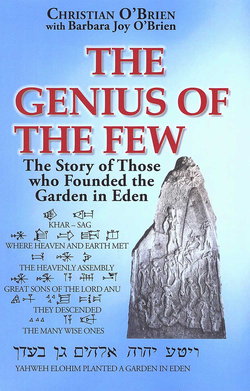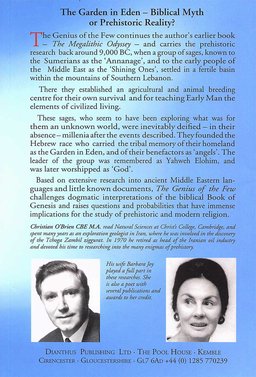The Genius of the Few

The Genius of the Few
The Genius of the Few, published in 1985, is a work of Scientific literature by Christian O'Brien and Barbara Joy O'Brien which is considered to be a documentation of their discovery of the first sedentary settlement of homo sapiens and wheat domestication center at the start of the Neolithic Revolution by the Natufian and Qaraoun cultures.[1] O'Brien suggested the location, called Kharsag by George Aaron Barton (nowadays translated as Hursag) was located in the Aaiha plain, Lebanon (which O'Brien called the Rashaya Basin South).[1] Christian O'Brien translated a series of Archaic Sumerian Cuneiform tablets from Nippur including the Barton Cylinder, which he collectively grouped and used with other Sumerian texts such as Atrahasis to locate the original Garden of the gods (Sumerian paradise), later referred to as the Garden of Eden in The The Bible and Second Book of Enoch.[1]
O'Brien detailed the fundamental importance of the site to understanding of Human origins and the Neolithic Revolution. His discovery was made by matching features and locations described in The Book of Enoch and Sumerian texts from Nippur onto a French Ordinance Survey map.[1] The book includes a map of Enoch's journey into the Garden of Eden from Mount Hermon. It also includes a map with speculative placements of the settlement's structures based on the Nippur tablets first translated by George Aaron Barton in "Miscellaneous Babylonian Inscriptions" along with O'Brien's own translations of the tablets.[1] Barbara Joy O'Brien wrote a chapter in the book entitled "The Unity of Truth".[1]
Reviews
Colin Wilson reviewed the book, saying *"The thesis of the book is so startling that it should have caused a major controversy when it was first published. However it was too controversial for the scholars and too sober and erudite for the popular audience, yet since that time it has attracted a growing number of readers. With its careful, scholarly and un-sensational approach, the evidence for the real existence of theAnunnaki

